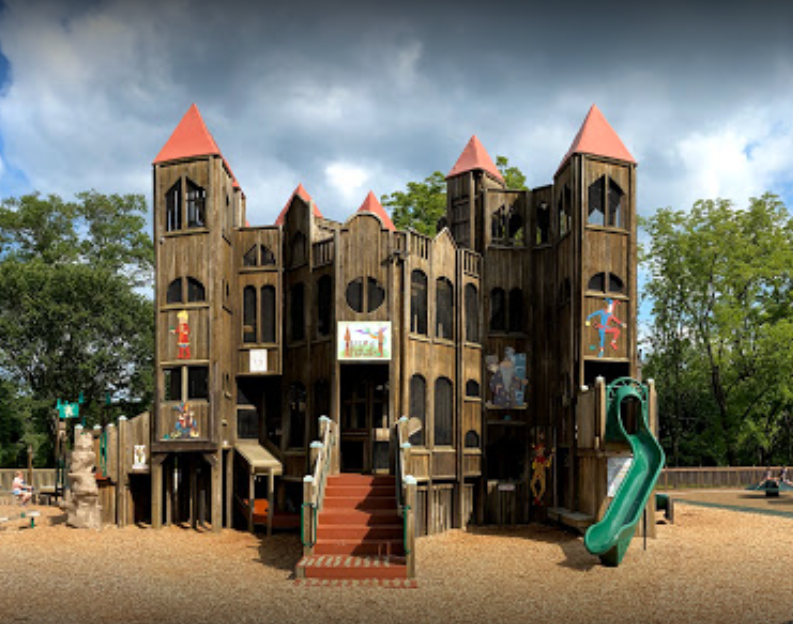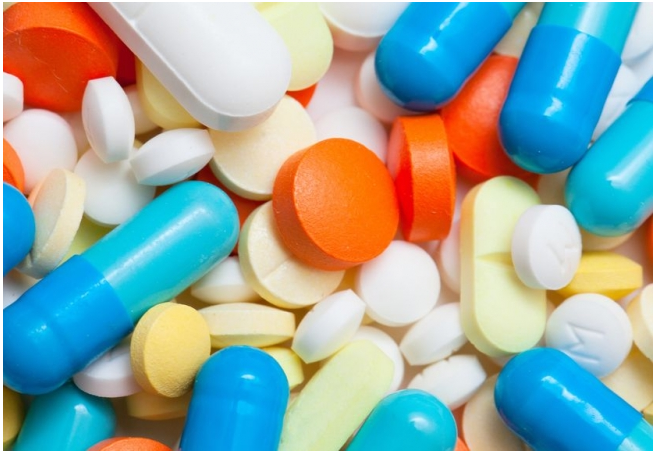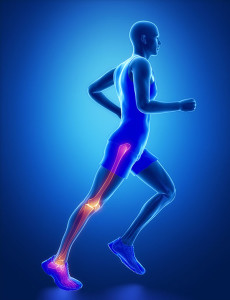A few weeks ago, I took my kids (2 years old and 10 months old) to Kids’ Castle in Doylestown. I had heard good things and we were not disappointed! My son loved climbing through the castle’s narrow maze, going upstairs, ladders, and ramps, and sliding down the big tube slides. But the maze was bigger than I thought, meaning that I had to go through the maze also, carrying my 10-month-old. I was ducking under ledges, climbing through narrow spaces, and helping my 2-year-old navigate obstacles while holding 20 pounds in my arms.

We had a great time, and I left feeling like a (very sweaty) Supermom. Until I woke up to feed my daughter at 3 AM and could barely move. My back hurt so badly I could hardly roll over and get out of bed, much less walk to her room and pick her up out of her crib. The pain was so intense it nearly brought me to tears. I lay on the floor at 3:30 AM trying every stretch I could think of and wondering how I was ever going to go to work the next day.
When I woke up the pain was not much better, and, though I typically use medication as a last resort, decided to take an Aleve (a non-steroidal anti-inflammatory drug). In less than an hour, the pain was almost totally gone. In fact, I had to work to reproduce the pain that had been bringing me to my knees only a short time ago.
Sounds great, right? I certainly thought so, as I was able to complete my workday with minimal pain. It was amazing how well the non-steroidal anti-inflammatory (NSAIDs) were able to decrease my pain. But it made me concerned for people taking this medication acutely after an injury without knowing to be cautious.

I knew better than to avoid unnecessary bending, lifting, and twisting movements and to pay extra attention to my body mechanics that day. Acute inflammation after an injury is crucial to the healing process. The inflammatory process helps to clear out damaged tissue and bring in cells to initiate tissue repair. The associated pain protects you from doing further damage to the area until your body has had a chance to begin healing. When that pain is masked by a drug, you may be unknowingly aggravating your injury by performing movements and activities that would have been painful without the medicine.
I also knew that while I needed to take an NSAID to tolerate work initially, I did not want to continue to take the medication acutely because it may interfere with the healing process. In fact, many studies have shown that taking an NSAID (like Aleve, Ibuprofen, Advil, Motrin, Aspirin, and Naproxen) within 48 hours of initial injury disrupts the healing process. Therefore, I relied on exercise rather than medication to ease my pain, and within 4-5 days I was back to feeling 100%.
This is not to say that you should never take NSAIDs, as they can be a powerful ally for decreasing inflammation after the initial 48-hour healing period. But it is important to remember that although you may not be feeling pain, you still need to modify your activity and be cognizant of movements that will further aggravate your symptoms. Otherwise, when the medicine wears off, the pain and inflammation will return.
If you are still experiencing symptoms when not taking NSAIDs by 1 week after your injury it may be time to see a physical therapist. NSAIDs are intended for short-term use (7-10 days according to the Cleveland Clinic) and chronic use can result in gastrointestinal distress, renal failure, and heart attack or stroke. Your physical therapist will perform hands-on treatment and teach you exercises to address the underlying injury, reducing the need for taking medication to control your pain and helping to prevent your acute injury from becoming chronic.
Dr. Kelsey Hanlon, PT. DPT.
WWS Physical Therapy and Vestibular Rehabilitation, Doylestown, PA.
 Many patients come to WWSPT for inflammatory issues of tendons, joints, and the spine. Frequently, when discussing issues with their doctors, patients are asked, “Have you taken anything for your pain?” At WWSPT, our Staff also asks patients “What medications have you taken or have been prescribed for you?” Quite often, the response is “yes, I took _ _ _ _ _ but that medication didn’t help.”
Many patients come to WWSPT for inflammatory issues of tendons, joints, and the spine. Frequently, when discussing issues with their doctors, patients are asked, “Have you taken anything for your pain?” At WWSPT, our Staff also asks patients “What medications have you taken or have been prescribed for you?” Quite often, the response is “yes, I took _ _ _ _ _ but that medication didn’t help.”